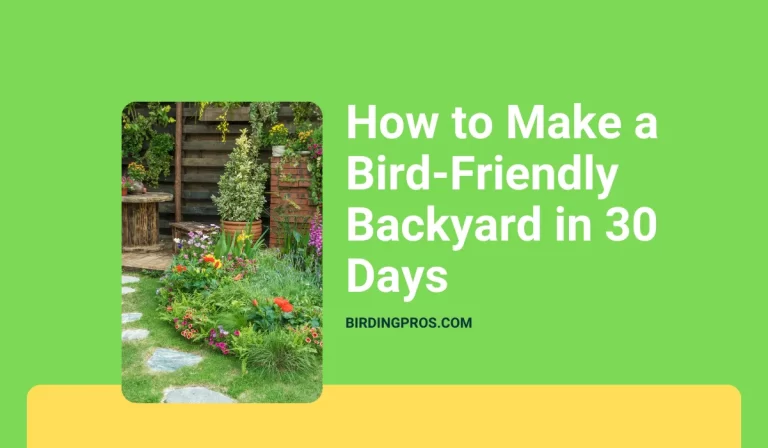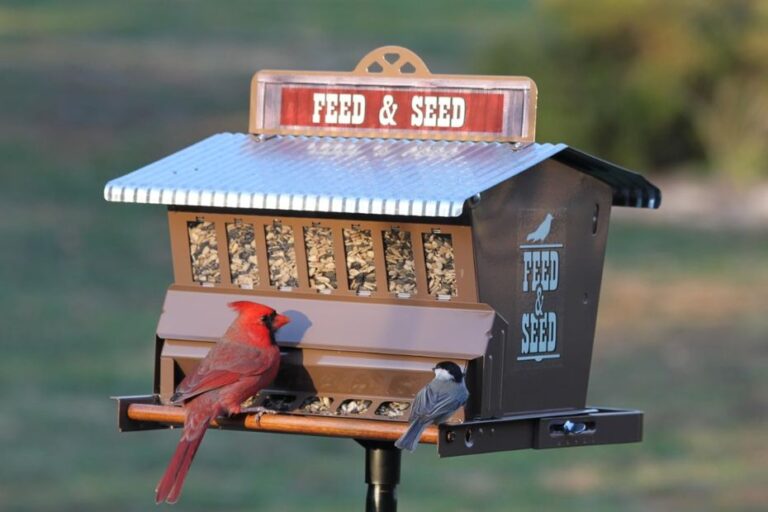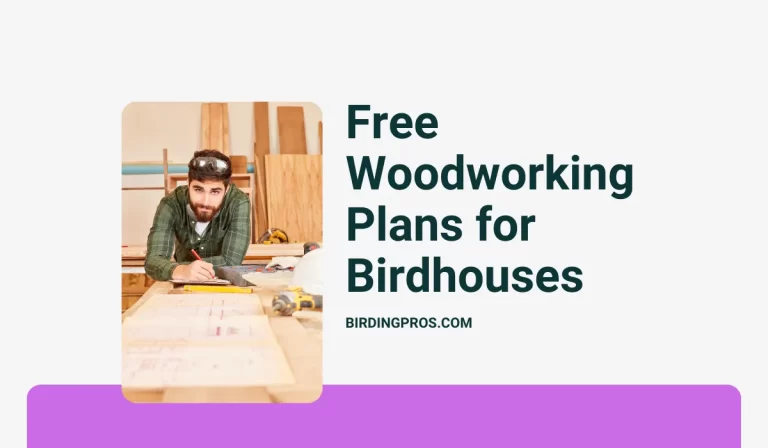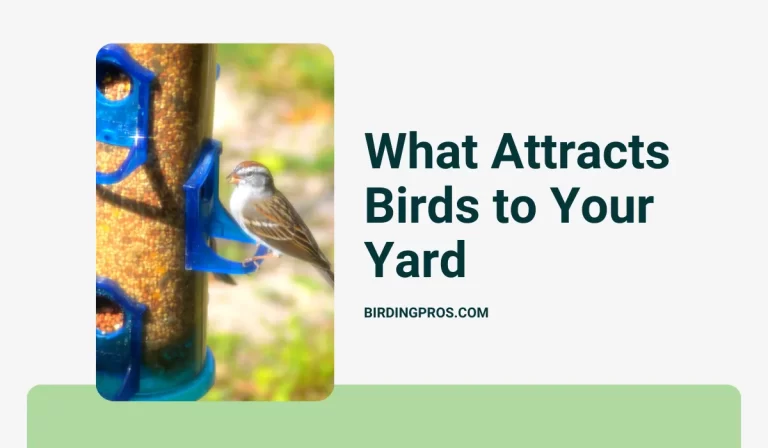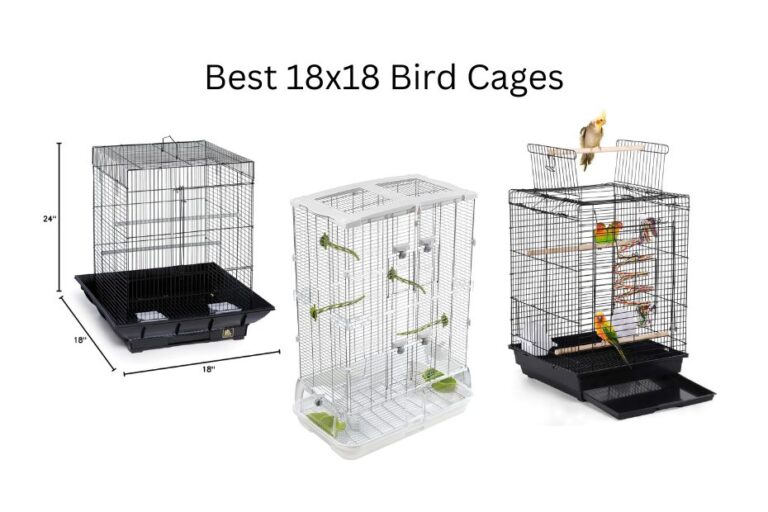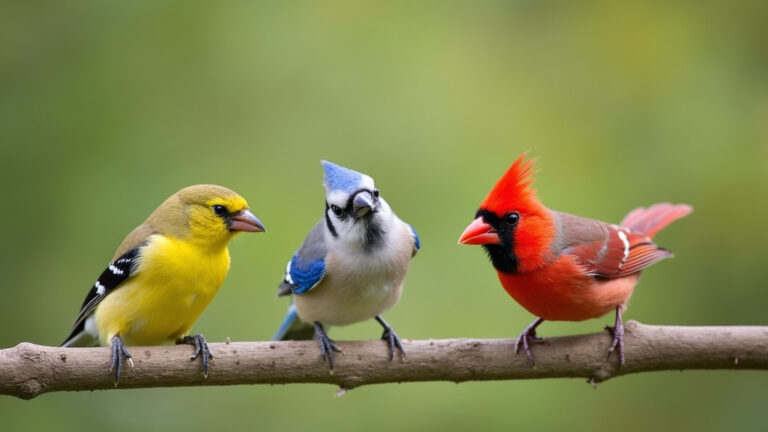Food Guide for Backyard Birding
Backyard birding is a delightful hobby that brings nature’s beauty right to your doorstep. Watching birds flutter around your yard, hearing their melodious songs, and observing their behaviors can be incredibly rewarding. One of the best ways to attract and support these feathered friends is by offering a variety of foods.
Table of Contents
Understanding Bird Diets
Birds have diverse dietary needs based on their species, size, and the season. Understanding these needs is crucial for successful bird feeding. Bird diets typically fall into several categories:
Seed Eaters
Seed eaters, like finches, sparrows, and grosbeaks, primarily consume seeds. They have strong, conical beaks designed to crack open seeds easily. Common seeds for these birds include:
- Black Oil Sunflower Seeds: High in fat and easy to crack open, these seeds are a favorite among many bird species.
- Nyjer (Thistle) Seeds: Tiny seeds that attract finches, especially Goldfinches.
- Millet: A small, round seed loved by ground-feeding birds like doves and sparrows.
- Safflower Seeds: These seeds attract cardinals and grosbeaks while deterring squirrels and blackbirds.
Insect Eaters
Insect-eating birds, such as warblers, wrens, and woodpeckers, primarily feed on insects. You can attract these birds by providing:
- Mealworms: Both live and dried mealworms are excellent sources of protein.
- Suet: A high-energy food made from animal fat, often mixed with seeds, nuts, and fruits, perfect for woodpeckers and nuthatches.
- Peanut Butter: A protein-rich treat that can be smeared on tree bark or added to suet mixtures.
Nectar Eaters
Nectar eaters, like hummingbirds and orioles, are attracted to sugary solutions. To cater to these birds, you can provide:
- Homemade Nectar: A simple mixture of four parts water to one part white granulated sugar, boiled and cooled. Avoid using red dye or honey.
- Commercial Nectar: Available in stores, but ensure it is free from artificial additives.
Fruit Eaters
Fruit-eating birds, such as thrushes, tanagers, and waxwings, enjoy various fresh and dried fruits. Common fruits to offer include:
- Berries: Blueberries, raspberries, strawberries, and blackberries are all popular choices.
- Citrus: Oranges, grapefruits, and other citrus fruits can attract orioles.
- Apples and Pears: These fruits can be cut into slices or chunks for easy consumption.
- Grapes: Both fresh and dried (raisins) are loved by many bird species.
Create a Bird-Friendly Environment
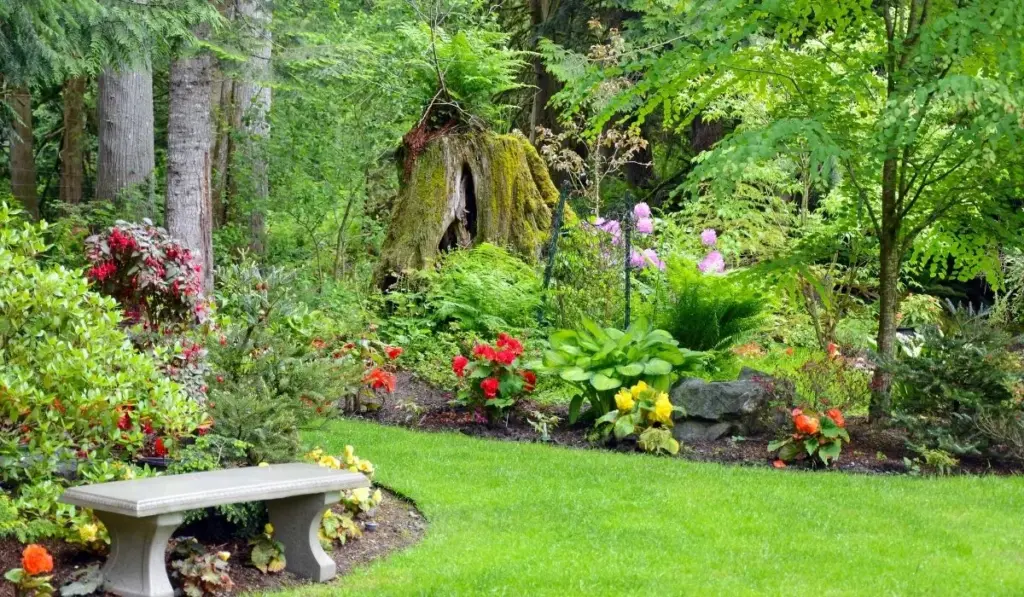
Providing food is just one aspect of attracting birds to your backyard. Creating a safe and welcoming environment is equally important. Here are some tips to make your yard more bird-friendly:
Provide Fresh Water
Birds need water for drinking and bathing. A clean, shallow birdbath can attract many species. Ensure the water is changed regularly to prevent the spread of diseases and to keep it fresh.
Plant Native Vegetation
Native plants provide natural food sources, such as berries, seeds, and nectar, and offer shelter and nesting sites. Consider planting a variety of trees, shrubs, and flowers to create a diverse habitat.
Avoid Pesticides
Pesticides can harm birds directly or reduce their food sources by killing insects. Opt for natural pest control methods to keep your yard bird-friendly.
Create Shelter
Birds need places to hide from predators and harsh weather. Plant dense shrubs or install birdhouses to provide safe nesting and roosting spots.
Keep Cats Indoors
Domestic cats are a significant threat to birds. Keeping your cats indoors or providing them with a secure outdoor enclosure can help protect the birds in your yard.
Types of Bird Feeders
Different birds prefer different types of feeders. Here are some common types of bird feeders and the birds they attract:
Hopper Feeders
Hopper feeders are sturdy, covered feeders that dispense seeds from a central container. They attract a wide variety of birds, including:
- Cardinals
- Chickadees
- Finches
- Sparrows
Tube Feeders
Tube feeders are cylindrical feeders with multiple feeding ports. They are excellent for small seed eaters like:
- Finches
- Chickadees
- Titmice
- Nuthatches
Platform Feeders
Platform feeders are open, tray-like feeders that can accommodate a variety of foods. They attract:
- Doves
- Jays
- Blackbirds
- Sparrows
Suet Feeders
Suet feeders are designed to hold suet cakes. They attract insect-eating birds, such as:
- Woodpeckers
- Nuthatches
- Wrens
- Chickadees
Nyjer Feeders
Nyjer feeders, also known as thistle feeders, have tiny holes suitable for dispensing Nyjer seeds. They attract:
- Goldfinches
- Pine Siskins
- Redpolls
Nectar Feeders
Nectar feeders are specifically designed for hummingbirds and orioles. They typically have bright red parts to attract these birds and are filled with sugar water.
Read More: Birdwatching For Kids: Why It Is Important?
Seasonal Feeding Tips
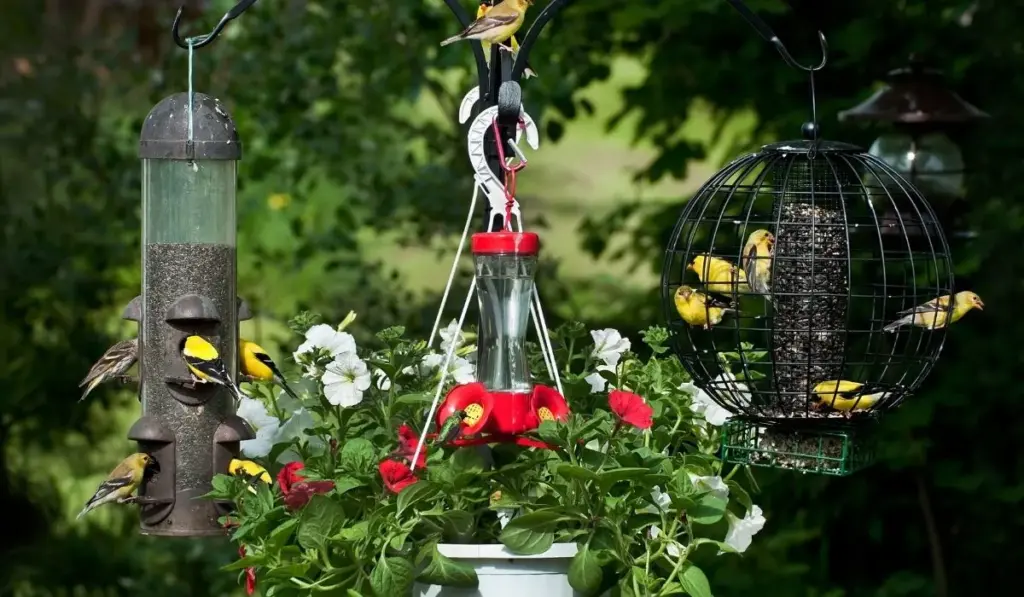
Birds have different dietary needs throughout the year. Adjusting your feeding practices based on the season can help support birds year-round.
Spring
Spring is a busy time for birds as they prepare for breeding season. During this period, offer high-protein foods to support their increased energy needs:
- Mealworms: Great for feeding nesting birds and their chicks.
- Suet: Provides essential energy for breeding birds.
- Nectar: For returning hummingbirds and other nectar feeders.
Summer
In summer, natural food sources are abundant, but you can still attract birds by offering:
- Fresh Fruits: Apples, berries, and grapes.
- Nectar: To support hummingbirds and orioles.
- Seeds: Black oil sunflower seeds and millet.
Fall
Fall is a crucial time for birds as they prepare for migration or winter. Offer high-energy foods to help them build fat reserves:
- Black Oil Sunflower Seeds: High in fat and energy.
- Suet: Provides essential fat and protein.
- Peanuts: Another high-energy food source.
Winter
Winter can be a challenging time for birds due to the scarcity of food. Providing a variety of foods can help them survive the cold months:
- Suet: Essential for energy in cold weather.
- Black Oil Sunflower Seeds: High-fat content helps keep birds warm.
- Peanuts and Peanut Butter: Great sources of protein and fat.
- Nyjer Seeds: Attracts finches, which stay year-round.
Common Backyard Birds and Their Food Preferences
Here are some common backyard birds and their preferred foods to help you attract them to your yard:
American Goldfinch
- Preferred Foods: Nyjer seeds, sunflower seeds.
- Feeder Type: Tube feeder, Nyjer feeder.
Northern Cardinal
- Preferred Foods: Sunflower seeds, safflower seeds, peanuts.
- Feeder Type: Hopper feeder, platform feeder.
House Finch
- Preferred Foods: Sunflower seeds, millet, Nyjer seeds.
- Feeder Type: Tube feeder, hopper feeder.
Blue Jay
- Preferred Foods: Peanuts, sunflower seeds, suet.
- Feeder Type: Platform feeder, hopper feeder.
Chickadee
- Preferred Foods: Sunflower seeds, peanuts, suet.
- Feeder Type: Tube feeder, suet feeder.
Downy Woodpecker
- Preferred Foods: Suet, peanuts, sunflower seeds.
- Feeder Type: Suet feeder, hopper feeder.
Mourning Dove
- Preferred Foods: Millet, cracked corn, sunflower seeds.
- Feeder Type: Ground feeder, platform feeder.
American Robin
- Preferred Foods: Earthworms, fruits (berries, grapes).
- Feeder Type: Platform feeder, ground feeding area.
Hummingbird
- Preferred Foods: Nectar (sugar water mixture).
- Feeder Type: Nectar feeder.
Maintaining Your Bird Feeders
Keeping your bird feeders clean and well-maintained is crucial for the health of the birds. Dirty feeders can spread diseases. Here are some tips for maintaining your bird feeders:
Regular Cleaning
- Frequency: Clean feeders every two weeks and more often in hot, humid weather.
- Method: Use a solution of one part bleach to nine parts water. Rinse thoroughly and allow to dry completely before refilling.
Checking for Mold
- Inspection: Regularly check for moldy or wet food, which can be harmful to birds.
- Action: Discard any spoiled food and clean the feeder before refilling.
Preventing Pests
- Squirrels: Use squirrel-proof feeders or baffles to prevent squirrels from accessing bird food.
- Insects: Keep nectar feeders clean and use ant moats to prevent ants from getting into the nectar.
Winter Maintenance
- Deicing: In freezing weather, ensure that water in birdbaths and feeders doesn’t freeze. Use a birdbath heater if necessary.
- Food Supply: Refill feeders more frequently, as birds need more energy in cold weather.
Bird-Friendly Plants and Landscaping
In addition to feeders, planting bird-friendly vegetation can enhance your backyard birding experience. Consider incorporating the following elements into your landscape:
Native Plants
Native plants provide natural food sources and shelter. They are also more adapted to the local climate and require less maintenance. Examples include:
- Coneflowers: Attract seed-eating birds like goldfinches.
- Serviceberry: Provides berries for a variety of birds.
- Milkweed: Supports insects that birds feed on.
Berry-Producing Shrubs
Shrubs that produce berries are excellent for attracting fruit-eating birds. Some popular choices are:
- Holly: Provides berries in the winter.
- Elderberry: Produces summer berries.
- Dogwood: Offers berries in late summer and fall.
Flowering Plants
Plants that produce nectar-rich flowers can attract hummingbirds and other nectar feeders. Consider planting:
- Salvia: A favorite among hummingbirds.
- Bee Balm: Attracts hummingbirds and butterflies.
- Trumpet Vine: Provides ample nectar for hummingbirds.
Trees for Nesting
Trees offer essential nesting sites and shelter. Include a mix of deciduous and evergreen trees to provide year-round benefits:
- Oak Trees: Support a variety of insects and provide acorns for food.
- Pine Trees: Offer shelter and seeds.
- Maple Trees: Attract insects and provide nesting sites.
The Role of Water Features
Water features can significantly enhance your backyard birding setup. Birds need water for drinking and bathing, and a well-placed water feature can attract a variety of species.
Birdbaths
Birdbaths are a simple and effective way to provide water. Ensure they are:
- Shallow: 1-2 inches deep is ideal for most birds.
- Clean: Change the water regularly to prevent disease.
- Accessible: Place them in a safe location, away from predators.
Ponds and Water Gardens
Larger water features like ponds and water gardens can attract a wide range of birds. Include:
- Gradual Slopes: Allows birds to wade in and out easily.
- Vegetation: Provides cover and attracts insects.
- Water Movement: A small fountain or waterfall can keep the water fresh and attract more birds.
Misters and Drippers
Misters and drippers can create a delightful effect that attracts birds. They provide a gentle water source that many birds find irresistible. Install them near birdbaths or shrubs to create a refreshing environment.
FAQs About Food Guide for Backyard Birding
1. What is the best type of bird feeder to attract a variety of birds to my backyard?
The best type of bird feeder to attract a variety of birds depends on the species you want to attract. A combination of hopper feeders, tube feeders, platform feeders, and suet feeders will cater to different dietary needs and feeding preferences. For example, hopper feeders are great for attracting cardinals and chickadees, while suet feeders are ideal for woodpeckers and nuthatches.
2. How often should I clean my bird feeders?
Bird feeders should be cleaned every two weeks, and more frequently during hot or humid weather. Regular cleaning prevents the spread of diseases among birds. Use a solution of one part bleach to nine parts water, rinse thoroughly, and allow the feeder to dry completely before refilling.
3. What can I do to prevent squirrels from eating the bird food?
To prevent squirrels from eating bird food, use squirrel-proof feeders or install baffles above and below feeders to block their access. Additionally, you can place feeders away from trees and structures that squirrels can use to jump onto the feeders. Offering safflower seeds, which squirrels tend to dislike, is another effective strategy.
4. How can I attract hummingbirds to my backyard?
To attract hummingbirds, provide a nectar feeder filled with a solution of four parts water to one part white granulated sugar. Avoid using red dye or honey. Planting nectar-rich flowers, such as salvia, bee balm, and trumpet vine, can also attract hummingbirds. Place the feeder and flowers in a sunny, visible location to increase the chances of attracting these tiny birds.
Conclusion
Backyard birding is a rewarding hobby that brings nature closer to home. By providing a variety of foods, creating a bird-friendly environment, and engaging in citizen science, you can attract and support a diverse range of bird species.
Whether you are a seasoned birder or just starting, the joy of watching and learning about birds in your backyard is a truly enriching experience. Embrace the beauty and wonder of backyard birding, and enjoy the fascinating world of birds right outside your door.

